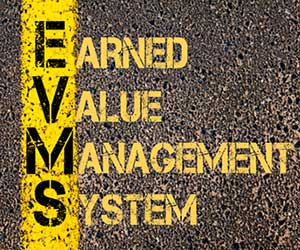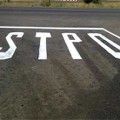
Earned value analysis is used to calculate the project status on two fronts:
- Schedule. Is the project ahead of or behind schedule?
- Cost. Is the project over or under budget?
Let’s say you are the project manager for the renovation of 3 hotel rooms. The tasks are as follows:
- Preparation. Jan. 1 – Jan. 10, $5,000.
- Room #1: Jan. 10 – 20, $15,000.
- Room #2: Jan. 15 – 25, $15,000.
- Room #3: Jan. 20 – 30, $15,000.
- Wrap-up: Jan. 25 – 31, $5,000.
It’s Jan. 16 today and you want to know the project status.
Solution
The first step is to determine the following three variables for each task:
- Planned Value (PV). The amount of the task that is supposed to have been completed.
- Earned Value (EV). The amount of the task that is actually completed.
- Actual Cost (AC). The cost of the activity to date.
This is normally done by first estimating the percent complete of each task and then multiplying by the budget.
Let’s say the preparation task is complete. You figure you’re 20% complete Room #1 and 10% complete Room #2, and you’ve spent $5,500 on preparation and $3,500 on Room #1. The cost must include all project costs, including wages if the project budget is responsible for them.
The initial table looks like this:
| Task | PV | AC | EV |
|---|---|---|---|
| Preparation | $5,000 | $5,500 | $5,000 |
| Room #1 | $7,500 | $3,500 | $3,000 |
| Room #2 | $1,500 | $0 | $1,500 |
| Room #3 | $0 | $0 | $0 |
| Wrap-up | $0 | $0 | $0 |
The next step is to calculate the following two variables:
- Schedule Variance. SV = EV – PV.
- Cost Variance. CV = EV – AC.
These two variables give you the project status from the schedule and cost perspective. Add a column for each. The table now looks like this.
| Task | PV | AC | EV | Schedule Variance (SV) | Cost Variance (CV) |
|---|---|---|---|---|---|
| Preparation | $5,000 | $5,500 | $5,000 | $0 | -$500 |
| Room #1 | $7,500 | $3,500 | $3,000 | -$4,500 | -$500 |
| Room #2 | $1,500 | $0 | $1,500 | $0 | $0 |
| Room #3 | $0 | $0 | $0 | $0 | $0 |
| Wrap-up | $0 | $0 | $0 | $0 | $0 |
| TOTAL | -$4,500 | -$1,000 | |||
Conclusions
Since the variances are both negative, the project is behind schedule and over budget.
The cost variance is minor, and maybe you can find $1,00 somewhere between now and the end of the project.
But the schedule variance is significant for Room #1, about 50% of the task (it should be twice as far along as it is). The project as a whole is only 17% complete but is 8% behind schedule. This is significant and thus it is getting behind too early and finishing on time is beginning to be a concern. It’s all due to room #1, so it might be a good idea to secure some resources so the completion of room #1 doesn’t hold up the others.






